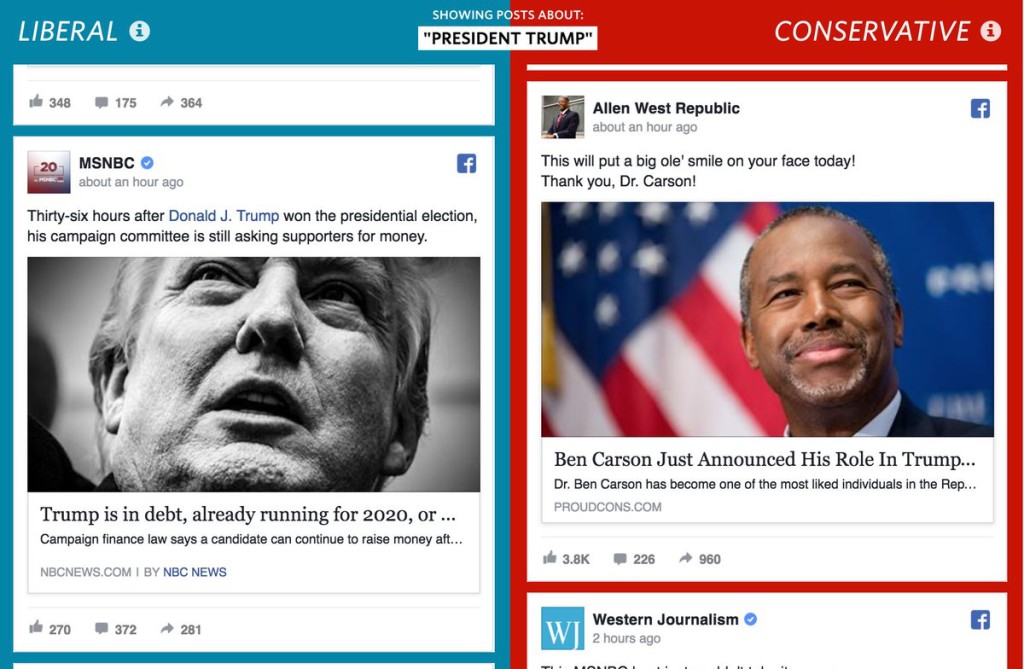 Blue Feed, Red Feed by Wall Street Journal
Blue Feed, Red Feed by Wall Street Journal
Reading Femke Snelting’s essay “A fish can’t judge the water”, I think about how social media has reshaped our communication. Each platform has an algorithm that orders and highlights posts. It is at once knowable and opaque, which ties into Tarleton Gillespie’s “Algorithm [draft][# digitalkeyword].”
There’s been a lot of criticism lately about how social media creates filter bubbles. We choose who to follow, which is an essential function of social media networks. Then we only see information from those whose views we find palatable. In addition, a combination of human decisions and software algorithm selects which ads to display to us, based on who we’ve chosen to follow and other information we’ve given.
Snelting writes that software “is shaped through and locked into economic models of production and distribution.” Social media splits society along political lines by only showing people what they want to see and shutting out contrasting opinions. There’s been a lot of revelations and speculation about how Facebook influenced the 2016 American election by presenting political propaganda to people who would be receptive to them.
Recently, I was surprised to see an article about “two internets” around the Brett Kavanaugh hearings for the US Supreme Court. Everything I have seen on the internet, from my liberal friends and news sources, denounces him as a sexual predator. Apparently there is a whole separate ecosystem supporting him. Although I believe that this issue is black and white, it has become harder for people to empathize with each other on more nuanced issues. The functions of social media algorithms continue to push us further apart.
References
Snelting, Femke. 2006. “A fish can’t judge the water.” Constant Verlag, 2006. http://www.constantvzw.org/verlag/spip.php?page=article&id_article=72.